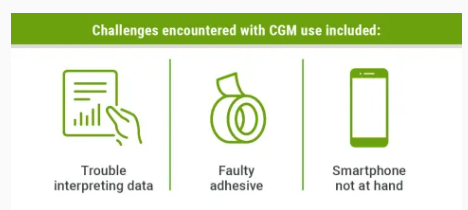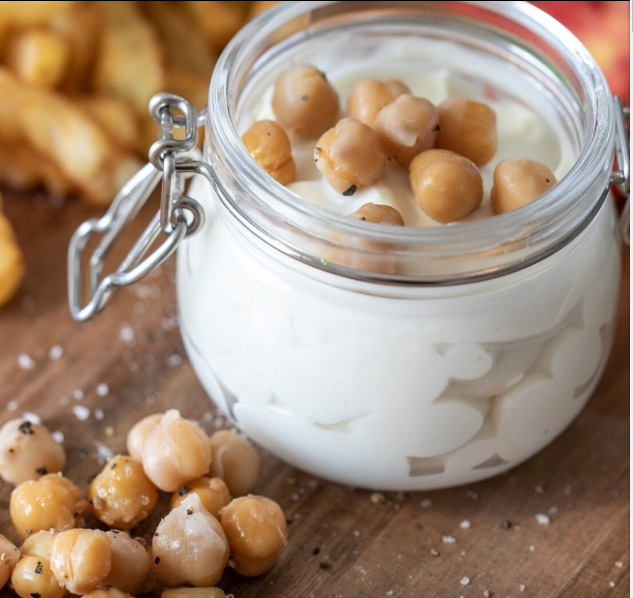FTC orders GoodRx to stop sharing users’ health data with advertisers, issues $1.5M fine by Rebecca Pifer for HealthCareDive.com, 1 February 2023.
 The Federal Trade Commission is penalizing GoodRx for sharing users’ sensitive health information with advertisers, in the agency’s first enforcement action under the Health Breach Notification Rule.
The Federal Trade Commission is penalizing GoodRx for sharing users’ sensitive health information with advertisers, in the agency’s first enforcement action under the Health Breach Notification Rule.
The FTC filed an order with the Department of Justice on Wednesday that would prohibit GoodRx from sharing user health data with third parties for advertising purposes, among other guardrails. GoodRx has also agreed to pay a $1.5 million fine, though the company admitted no wrongdoing. The order needs to be approved by a federal court in order to go into effect.
Regulators are increasingly trying to crack down on companies profiting from users’ health information in the gray area of data practices not protected by existing law. The U.S.’ lack of comprehensive privacy legislation has resulted in plethora of data sharing, including that of highly sensitive medical information, between organizations and advertisers — especially as health apps, which track everything from diabetes to fertility to heart health to sleep, collect more and more data from consumers.
As a result, regulators are leaning on new levers such as the Health Breach Notification Rule to tamp down on the practice. The HBNR requires health apps and other connected devices to notify consumers and the FTC when their data is disclosed or acquired without the consumers’ permission. FTC officials said that enforcing the HBNR to protect people’s health privacy is a high priority for the agency, and other health apps should pay close attention to their obligations under the rule or expect government action.
Read more: FTC orders GoodRx to stop sharing users’ health data with advertisers
CGM devices may pose problems with use for adults aged 50 to 85 years with diabetes by Erin T. Welsh with Gary Scheiner for Healio.com/endocrinology, 1 February 2023.
 Researchers highlighted challenges with continuous glucose monitoring devices, including trouble interpreting results, device adhesion and smartphone access, among adults aged 50 to 85 years with type 1 or type 2 diabetes. Findings were published in Applied Clinical Informatics.
Researchers highlighted challenges with continuous glucose monitoring devices, including trouble interpreting results, device adhesion and smartphone access, among adults aged 50 to 85 years with type 1 or type 2 diabetes. Findings were published in Applied Clinical Informatics.
“This is a whole area of health technology that needs study,” Michael Weiner, MD, MPH, research scientist at the Center for Health Services Research at the Regenstrief Institute and the department of medicine at Indiana University and the department of Veterans Affairs, Veteran Health Administration, Health Services Research and Development Service at the Center for Health Information and Communication, Indianapolis, said in a related press release. “There’s hardware involved, which is the device itself. There’s software involved, which is reading, organizing, interpreting and communicating the data from the device. Knowing how the technology works in the real world and the impact of the technology on usability and ultimately on health outcomes is important.”
PERSPECTIVE by Gary Scheiner, MD, CDCES
From my perspective, there are several unique challenges faced by the elderly when using CGM systems. The main challenge involves one’s comfort level with technology — learning to use the system, alarm fatigue, interpreting and sharing the data, and so on. I have found that this can be handled with proper training, delivered at a pace and style that suits the user.
Older adults are less likely to own smartphones, forcing reliance on the manufacturer’s handheld receiver. The receiver displays may be difficult for those with reduced vision to see clearly, and the programming of the receivers can be cumbersome — issues that the manufacturers need to address. Inserting the sensors can be difficult for some older users, as the insertion devices require a certain degree of hand strength and dexterity. Device manufacturers need to take this into greater consideration when designing future iterations of the products. Skin issues can present challenges too. Bruising/bleeding is common, particularly for those who take blood thinners. Removal of the sensors may be difficult for those with thin/dry skin, and oils and adhesive solvents can help in this regard. Finally, dehydration is a common issue in the elderly, and proper hydration is essential for CGM performance. Hydration education should be provided for all elderly patients.
Overall, the pros far outweigh the cons when it comes to CGM use for older adults. CGM is a great tool for avoiding dangerous hypoglycemia, particularly for those with hypoglycemia unawareness, which is very common in older patients, and for showing how one’s daily behaviors influence glucose levels. The challenges facing the elderly when using CGM can typically be overcome with proper education and training.
Read more: CGM devices may pose problems with use for adults aged 50 to 85 years with diabetes
Chickpeas, the little legume with big alt-protein potential by Abigail Klein Leichman for Israel21c.org, 9 January 2023.
 Soy is the undisputed ruler of the plant-based alternative protein kingdom, even 60 years after it hit the mass market. Next in line is pea protein, introduced about 20 years ago. The latest legume to claim an alternative protein crown: chickpeas, also known as garbanzo beans.
Soy is the undisputed ruler of the plant-based alternative protein kingdom, even 60 years after it hit the mass market. Next in line is pea protein, introduced about 20 years ago. The latest legume to claim an alternative protein crown: chickpeas, also known as garbanzo beans.
“Two options are not enough to meet the need to diversify nutrition and offer choices that are healthier and more sustainable,” says Taly Nechushtan, CEO of Israeli chickpea protein pioneer InnovoPro. “The world of food and beverage is searching for more opportunities in this in-demand and growing category, especially amid concerns about allergies, sustainability and deforestation.”
The global chickpea protein ingredients market – including concentrates, isolates, and flour — is projected by some analysts to reach $737.8 million by 2025. According to Future Market Insights, “Chickpeas are a good source of protein and fiber, and they are low in fat. Hence, the growing consumption of healthy snacks is expected to create lucrative growth prospects for the chickpea market players. The demand for chickpeas is also being driven by the rising popularity of plant-based diets,” the report states.
“Today, many plant-based products have long lists of ingredients including stabilizers and colors. Consumers want industrialized products that save them time, but they want them to be healthier. It’s a reasonable request but hard to find,” says Nechushtan. “We offer an all-in-one solution: chickpea proteins that are functional, neutral in taste, sustainable, nutritious, and that allow a ‘clean label’ offering.”
Read more: Chickpeas, the little legume with big alt-protein potential
Let’s look at YOUR IMMUNE SYSTEM:
How to tell if your immune system is weak or strong by David Robson for NewScientist.com, 31 January 2023.
 Is our immune system healthy or not? Now, a burgeoning field of immunology is attempting to do just that with tests that “grade” your immune system, the idea being that it could help people preempt problems and motivate them to make lifestyle changes to avoid ill health.
Is our immune system healthy or not? Now, a burgeoning field of immunology is attempting to do just that with tests that “grade” your immune system, the idea being that it could help people preempt problems and motivate them to make lifestyle changes to avoid ill health.
How do you tell whether your immune system is doing its best? Let’s begin by considering the different components. The first line of defense comes from innate immune cells such as macrophages, which engulf bacteria and release chemicals that trigger inflammation, making cells less hospitable to pathogens.
Once a threat has been identified, a second line of defense called the adaptive immune system kicks in, with more specialized tools. B-cells, for example, form antibodies that bind to the unwanted newcomer and render it harmless. T-cells, meanwhile, include killer cells that attack infected cells, as well as helper cells that coordinate the activities of the other immune cells and aid the B-cells in producing antibodies. Regulatory T-cells are also on hand to call off the battle when the threat has passed, so the body can repair the damage.
Our biological warriors can be found lurking around the body. “They’re in the mucosal lining of our airways, the digestive tract and in our skin – anywhere things that could upset the body might get in,” says Jenna Macciochi, an immunologist at the University of Sussex, UK. They are also aided by microorganisms in the body, known as the microbiome. “We often think about the microbiome in relation to the gut, but we have microbiota living all over our body,” says Macciochi.
Historically, there are some basic ways to assess the health of your immune system – including, for instance, measuring the levels of inflammatory molecules and numbers of immune cells within your blood. But recently, our measures have become more sophisticated, with a greater focus on examining the precise balance of the immune system’s different components.
Read more: How to tell if your immune system is weak or strong
****************************************************************************************
The food and drink that really can boost your immune system by Tim Spector for NewScientist.com, 31 January 2023.
 What do we really need to eat to support a healthy immune response? Only fairly recently have we discovered that the biggest immune organ is our gut. The immune system is in regular contact with the trillions of microbes living in the gut, which send signals to dial immune activities up or down.
What do we really need to eat to support a healthy immune response? Only fairly recently have we discovered that the biggest immune organ is our gut. The immune system is in regular contact with the trillions of microbes living in the gut, which send signals to dial immune activities up or down.
The good news is that the delicate balance of this system can be modified through diet. Take chronic low-grade inflammation, which can be thought of as the result of an overstimulated immune system and increases the risk of heart disease and metabolic problems such as obesity. The complex interactions between the gut lining, short-chain fatty acids produced by the fermentation of dietary fibers by gut microbes, and pro-inflammatory chemicals called cytokines all contribute to our overall level of inflammation.
FOODS TO MAINTAIN A HEALTHY IMMUNE SYSTEM
-
-
- Eat your veggies
- Fermented foods
- Fiber-rich foods
-
Read more: The food and drink that really can boost your immune system
Human pancreatic capillaries and nerve fibers persist in type 1 diabetes despite beta cell loss by Tiffany M. Richardson, et. al. for American Journal of Physiology, 25 January 2023.
The autonomic nervous system regulates pancreatic function. Islet capillaries are essential for the extension of axonal projections into islets, and both of these structures are important for appropriate islet hormone secretion. Because beta cells provide important paracrine cues for islet glucagon secretion and neurovascular development, we postulated that beta cell loss in type 1 diabetes (T1D) would lead to a decline in intra-islet capillaries and reduction of islet innervation, possibly contributing to abnormal glucagon secretion.
The results indicate that pancreatic capillaries and nerve fibers persist in T1D despite beta cell loss, suggesting that alpha cell secretory changes may be decoupled from neurovascular components.
Read more:


i have just been informed by my Endocrinologists nurse that Medicare is not paying for Dexcom 7. Is that true?
I would like to know as well. With the G6, it took them awhile to finally approve it and get all the billing codes, etc, so hope that is the same with ^7. The cost is the same from what I have heard so that can’t be the argument.
The info I’m hearing is that Medical coverage is coming … possibly early summer or earlier … but I wouldn’t hold your breath.
Here is how you tell if your immune system is working. Check out your inflammation scores. Heck I know my immune system is working when I get to limp while walking.